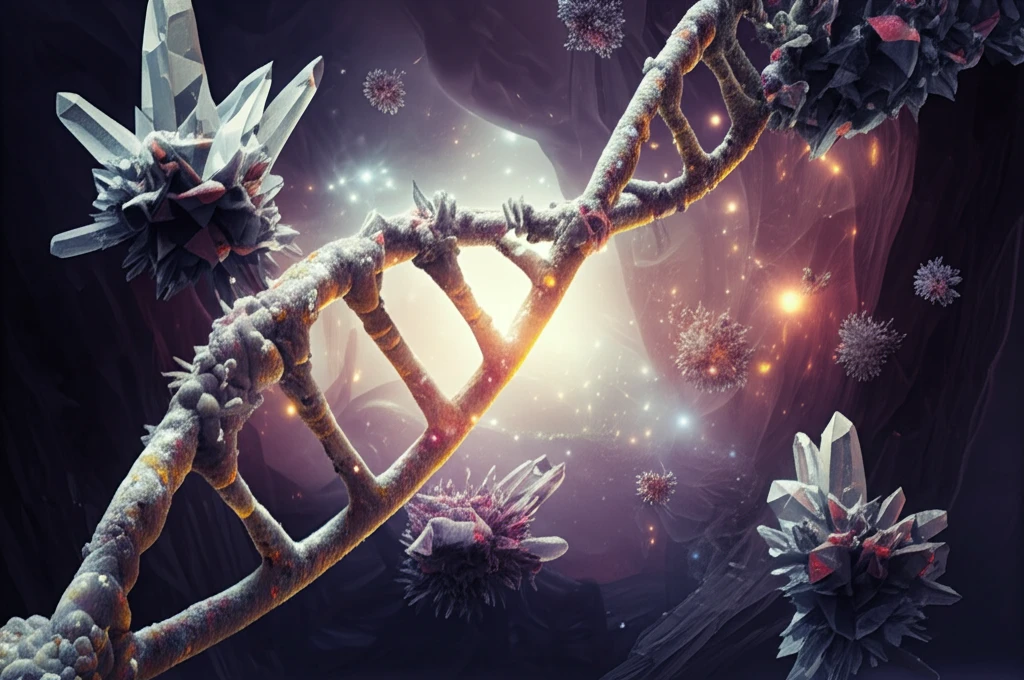
Unlocking the Secrets of Novel Antimicrobials: A Deep Dive into Chloro- and Fluoro-Substituted Thiocarboxyhydrazones
"Explore the synthesis, structure, and bacteria-fighting potential of these innovative chemical compounds and how they could shape the future of medicine."
In an era defined by increasing antibiotic resistance, the quest for novel antimicrobial agents has become more critical than ever. The overuse of traditional antibiotics has led to the emergence of bacteria that are resistant to commonly used treatments, posing a significant threat to public health. This pressing issue has fueled intense research into new types of antibiotics, with hydrazones emerging as a particularly promising class of compounds.
Hydrazones, known for their diverse biological activities, have garnered considerable attention for their potential antimicrobial properties. Among these, thiocarboxyhydrazones stand out as a special kind of hydrazone compound, characterized by the replacement of C=O groups with C=S groups. This seemingly minor structural modification can lead to a significant boost in antimicrobial activity, making them attractive candidates for drug development.
Recent studies suggest that halido-substituted hydrazones, which incorporate halogen atoms like chlorine or fluorine, exhibit even more potent activity than their non-substituted counterparts. To further explore this avenue, a team of scientists synthesized and characterized three chloro- and fluoro-substituted thiocarboxyhydrazones: 2-(2-chlorobenzylidene)-N-methylhydrazinecarbothioamide, 2-(4-fluorobenzylidene)-N-methylhydrazinecarbothioamide, and 2-(2-chloro-4-fluorobenzylidene)-N-methylhydrazinecarbothioamide. This article delves into the synthesis, structural analysis, and antimicrobial activity of these novel compounds, shedding light on their potential to combat bacterial infections.
The Synthesis and Structure of Novel Antimicrobials

The creation of these compounds began with reacting 4-methyl-3-thiosemicarbazide with different benzaldehydes in methanol. By using 2-chlorobenzaldehyde, 4-fluorobenzaldehyde and 2-chloro-4-fluorobenzaldehyde, the researchers were able to create three distinct compounds. The process was monitored using thin layer chromatography (TLC) to ensure the reaction progressed as expected. Once complete, the solvent was removed, and the resulting solids were purified through recrystallization from methanol to yield pure crystals, suitable for further analysis.
- Similar Structures: The three compounds share similar structural motifs, with slight variations introduced by the chloro- and fluoro-substituents.
- Hydrogen Bonding: Hydrogen bonds play a crucial role in stabilizing the crystal structures of the compounds.
- π-π Interactions: These interactions further contribute to the stability and packing of the molecules within the crystal lattice.
The Promise of New Antimicrobials
The study highlights the potential of chloro- and fluoro-substituted thiocarboxyhydrazones as antimicrobial agents. While further research is needed to optimize their activity and assess their safety, these compounds offer a promising starting point for the development of new drugs to combat drug-resistant bacteria. By exploring the chemical space of thiocarboxyhydrazones and related compounds, scientists may be able to discover even more potent and effective antimicrobial agents to address the growing threat of antibiotic resistance.
